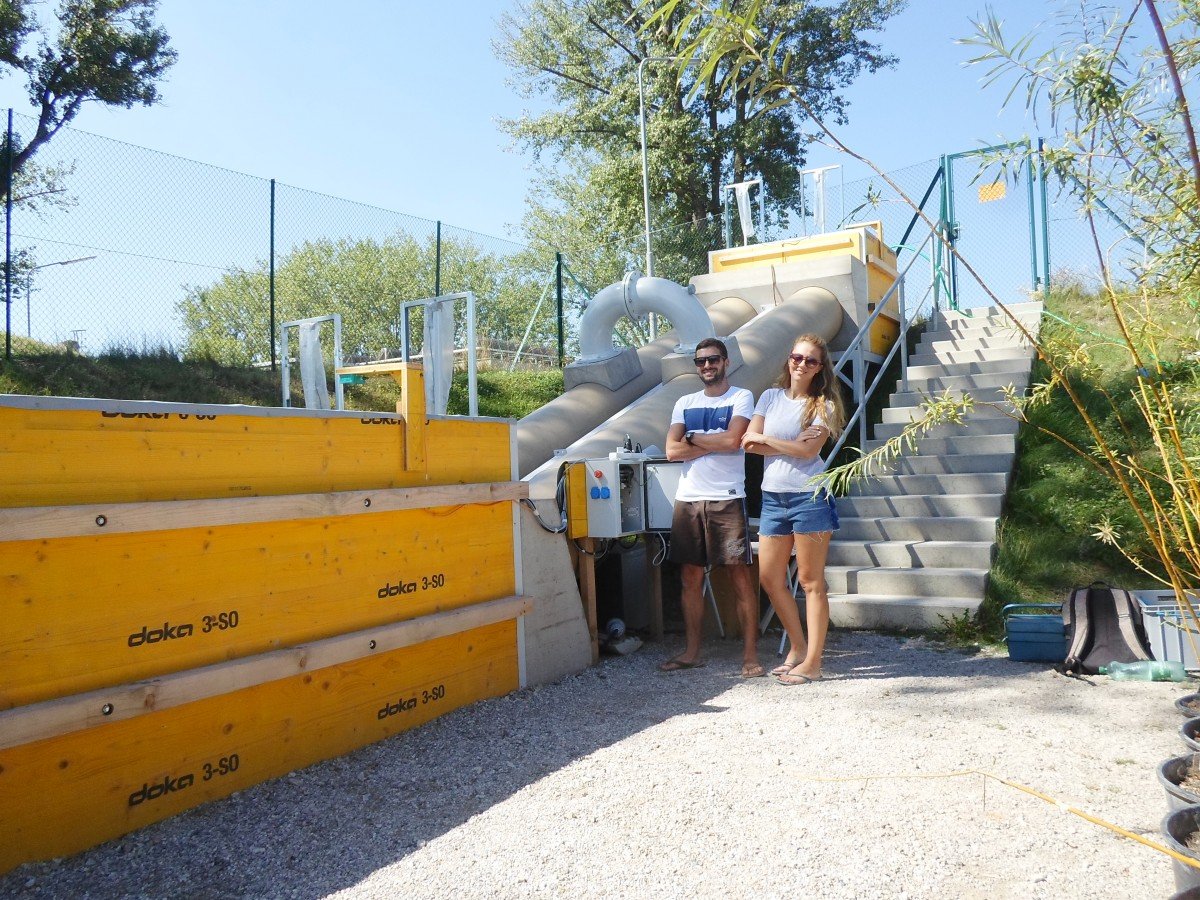
A team of engineers developed an innovative fish sluice, which offers a migration aid to the animals in obstructed waters. The solution is less complicated than existing systems and simultaneously generates green electricity.
In Austrian rivers alone, there is one transverse structure per river kilometre – according to the statistics of the Federal Office of Water Management. That is around 33,000 obstacles to migration for fish and other organisms. A lack of waterway continuity has a negative impact on the ecosystem and means, among other things, that food security for fish is no longer assured. The structures also prevent migratory fish species from migrating to their spawning grounds. At the same time, the structures fulfil important functions for mankind. They are either flood protection structures or hydroelectric power stations that generate valuable green electricity.
Use of Hydropower
Within the framework of the EU Water Directive, the implementation of river continuity by 2027 was requested. In order to achieve a good ecological and chemical status of water bodies, operators of flood protection structures and hydropower plants are called upon, to set up migration aids for fish. But conventional solutions take up a lot of space and are expensive, complains technician Bernhard Mayrhofer. He himself worked on the planning of conventional fish migration aids – and identified a need for improvement. Together with a team of researchers, he wanted to prove that ecological water protection and the use of hydropower can be combined.
Two-Chamber System
Fishcon, the fish migration aid developed by them, occupies seventy per cent less space, is cheaper – and also generates green electricity. The solution is suitable for gentle migration upstream and downstream and is also suitable for swimming-weak organisms. The construction is based on a two-chamber system with hydraulic interconnection. The two chambers are realized by two tubes with closing devices at the ends. A central, curved tube connects the chambers and contains a turbine which reduces the flow velocity and generates electricity at the same time. A fine rake prevents contamination and the swimming in of fish. This video shows the principle:
Amortization
The electricity generated by the turbine can supply up to twenty-five local households with electricity. According to Mayrhofer, the investment costs can be amortized on the basis of the energy proceeds. If it does not make economic sense to provide energy in regions, the flow can be limited by means of a throttle. Investigations have shown that fish migration is also possible with very small quantities of pilot current.
The system is installed below the water level and horizontally inclined. One chamber is open to the upstream water, the other to the downstream water. For the fish swimming inside, the chambers open at each respective end. The system is suitable for heights of about one point five to eight meters – larger drop heights can be overcome by a combination of several locks.
Pilot Facility
After one year of research and development, Fishconwas patented in Europe in 2015. In 2017 a first pilot facility was built. The framework was a feasibility study. This was supported by the Climate and Energy Fund and carried out by the University of Natural Resources and Applied Life Sciences Vienna. The function of fish migration could be proven. In the same year, Mayrhofer founded Fishcon GmbH together with his research colleague Alkisti Stergiopoulou. Stergiopoulou studied hydraulic engineering and quality management, he himself studied Urban Renewable Energies.
The results of the feasibility study flowed into the first pilot plant in 2018, which was constructed in Upper Austria at the Lippenannerlwehr an der Alm. The facility was made of steel and built in a stretch of water with the leading fish brown trout. There, the migration aid for fish overcomes a drop height of approximately two meters. A second pilot plant is to follow in 2019. The launch is planned for 2020.
Investor
Mayrhofer knows that there is a great need for migration aids. The Water Framework Directive of the European Union is to be transposed into national law by 2027. In Germany alone, solutions still have to be implemented for an estimated 100,000 transverse structures. In the entire European Union, Mayrhofer estimates a market volume of thirteen billion Euros.
Production of the fish sluice is to take place in cooperation with K. u. F. Drack (KFC). The Drack family business has been operating small hydroelectric power plants for around a century and can look back on many years of experience with energy and electrical engineering. Above all, however, KFD will contribute its know-how in hydraulic steel engineering. Shortly after Fishcon GmbH was founded, KFD acquired a twenty-five per cent stake in the start-up.
Also interesting:
Butterflies as a Means to Measure Biodiversity – and What We See is Bad News for Humanity
